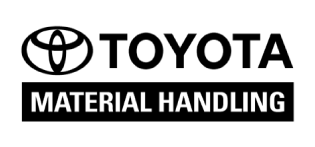As businesses increasingly adopt B2B payments and accounts receivable (A/R) automation, scaling these programs requires a mix of the right technology, internal marketing and change management. During the panel discussion, Scaling Your B2B Program at TreviPay’s Crossroads Conference, leaders from Best Buy, Toyota Material Handling, General Motors and Red Wing Shoes shared their insights on how they successfully grew their B2B programs and the lessons they’ve learned along the way.
Moderated by Martha Salinas, this insightful conversation featured Doug Bitney of Best Buy, Nick Ostergaard of Toyota Material Handling, Lisa Coggins of General Motors and Todd Holzer of Red Wing Shoes. Together, they dove into the complexities of building and scaling a B2B payments and A/R program, offering practical advice for those looking to expand their own initiatives.
We’ve compiled the top insights from their discussion—read on to discover the key strategies for scaling your B2B program.
We feel like a lot of the work that’s been building over the last ten years is now ready to switch the payments landscape,B2B payments are having their day in the sun.
– Brandon Spear, CEO of TreviPay
Scaling a B2B program is not a one-time effort; it requires continuous iteration and flexibility. Nick Ostergaard of Toyota Material Handling emphasized the importance of empowering teams to make decisions and adapt quickly.
“Identify the ideal state, be truthful about your current state and break down gaps into manageable chunks,” Ostergaard explained. This agile approach ensures that businesses can respond to changing market conditions and buyer expectations, which can shift dramatically over the course of a large-scale initiative.
He also emphasized the need for leadership to give teams the freedom to operate: “As a leader, you’re accountable for the strategy, but you have to empower your people to take charge and execute.”

“As a leader, you’re accountable for the strategy, but you have to empower your people to take charge and execute.”
– Nick Ostergaard, Senior Manager & Department Head, Advanced Services & Digital Solutions, Toyota Material Handling


“We had to make bold moves to modernize our billing processes and dealer reimbursements.”
– Todd Holzer, Channel Operations GTM Process Manager – Industrial, Red Wing Shoes

Todd Holzer from Red Wing Shoes highlighted how critical it is to understand both the buyer’s and the seller’s needs. “We had to make bold moves to modernize our billing processes and dealer reimbursements,” Holzer shared, citing the archaic, manual processes Red Wing used before automating with TreviPay.
Managing a network of 500 stores and ensuring fast, accurate dealer reimbursements was key to maintaining strong dealer relationships. “If it takes six months to reimburse a dealer, you’re going to lose their enthusiasm,” Holzer warned. By addressing both customer and dealer needs, Red Wing Shoes was able to streamline their processes and improve satisfaction across the board.
Doug Bitney of Best Buy underscored the importance of customer segmentation for driving a tailored approach to B2B relationships. Best Buy serves businesses through a variety of channels—retail, online, APIs and salespeople—and has divided its B2B customers into specific verticals such as healthcare, education and hospitality. Each vertical is supported by dedicated salespeople who understand the unique needs of their industry, which helps Best Buy better serve its customers.
“Customer segmentation allows us to provide more personalized solutions that align with each vertical’s needs,” Bitney said. This personalized approach ensures that B2B customers, whether large enterprises or small businesses, receive the right solutions and support.

“Customer segmentation allows us to provide more personalized solutions that align with each vertical’s needs.”
– Doug Bitney, Director, Growth and Innovation/Mobile Payments, Financial Services, Best Buy


“I don’t view working with TreviPay as just a vendor relationship anymore; it’s a strategic partnership”
– Lisa Coggins, National Manager Fleet, Government and Indirect Sales, General Motors

Lisa Coggins from General Motors shared how leveraging vendor expertise can help scale programs more effectively. She highlighted the value of building strong partnerships, particularly when scaling operations.
“I don’t view working with TreviPay as just a vendor relationship anymore; it’s a strategic partnership,” Coggins said, referring to the collaboration between General Motors and TreviPay.
Coggins also stressed the importance of transparency and education in fostering successful partnerships, noting that GM’s initial failure to properly educate their dealers on the benefits of their billing program led to missed opportunities. “We were the best-kept secret at General Motors, but we’re not anymore,” she admitted, explaining how their team re-engaged with dealers to ensure everyone understood the program’s value.
When it comes to scaling a B2B program, it’s not just about setting goals; it’s about setting realistic, actionable plans that evolve over time. Holzer emphasized the need to be realistic: “Make yourself equal before you make yourself different.”
In other words, execute your current strategy flawlessly before attempting to introduce new innovations. Scaling isn’t just about the end goal—it’s about mastering each step along the way.

“Make yourself equal before you make yourself different.”
– Todd Holzer, Channel Operations GTM Process Manager – Industrial, Red Wing Shoes


“The key to scaling payment programs is finding the right partners who can integrate seamlessly with your risk management framework. These partnerships need to bring as much ‘fin’ as they do ‘tech’ to ensure success in global markets”
– Aaron Lindstrom, Regional Head of E-Commerce

As B2B payments grow more complex, collaboration with fintech companies and financial institutions is becoming essential. These partnerships allow businesses to leverage cutting-edge technology and financial services to scale payment programs, reduce costs and improve the overall user experience.
How businesses need to prepare:
Companies should seek out partnerships that align with their strategic goals and can provide the technology needed to enhance their payment solutions. This includes services like real-time payments, embedded finance and advanced analytics.
Establishing strong partnerships with banks can provide access to global financial networks and regulatory expertise. These collaborations can also help manage cross-border transactions more efficiently.
As B2B buyer expectations become more aligned with their B2C experiences, companies are increasingly focused on delivering personalized, seamless and efficient solutions. Whether through leveraging technology, empowering teams or fostering strong partnerships, the panelists agreed that adaptability and a customer-centric approach are critical for scaling B2B programs in 2025 and beyond.
Whether you’re just starting to build your B2B payments strategy or looking to refine and expand your existing program, now is the time to act. Leverage the insights shared by industry leaders to remove friction, streamline operations and meet your customers’ evolving needs. Contact TreviPay today to learn how our solutions can help you scale your B2B program and drive long-term growth in 2025 and beyond.